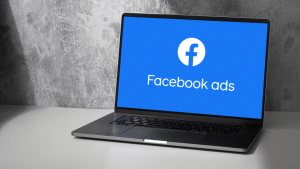How Do Ads on Facebook Work?
How do ads on Facebook work?
Facebook’s sophisticated advertising system uses a complex algorithm to display ads tailored to users’ preferences and online activities. By analyzing user interactions, likes, and shares, Facebook delivers targeted ads designed to resonate with their interests. This process benefits businesses by allowing them to reach their ideal audience and enhances user experience by showing relevant content.
This article will discuss how Facebook ads work.
1. Ad Creation
Ad creation begins with you having a clear goal in mind. Whether boosting brand awareness, driving website traffic, or encouraging product sales, this objective shapes the entire ad creation process.
The Facebook Ads Manager offers diverse Facebook ad formats to suit different needs. Pick the ad format that aligns with your message, from eye-catching image ads and engaging video ads to dynamic carousel ads and simple text posts.
Additionally, the message is crucial. So, carefully craft the text, headlines, and captions to resonate with your target audience. Visual elements also play a big role, as a well-designed ad grabs attention and leaves a lasting impression. The creative flair turns a simple Facebook ad campaign into a compelling story.
2. Targeting the Right Audience

Imagine conversing in a room full of people who share your interests. That’s the essence of targeting on Facebook. Define your ideal audience based on demographics, interests, behaviors, etc. Doing this helps you choose the perfect gathering for your Facebook advertising campaign to resonate.
Facebook knows more about its users than you can imagine. You can tap into this wealth of information by targeting Facebook users based on their online shopping habits, device usage, travel patterns, and more.
In addition, once you find a group that responds well to your message, you can use the Facebook Lookalike Audience feature. Facebook then identifies users with similar characteristics, expanding the reach to potential customers who share traits with the existing fanbase.
3. Bidding and Budgeting
Bidding on Facebook is like an auction where advertisers compete for the best ad spots. Advertisers set a bid, the maximum amount they’re willing to pay for displaying their ad. The higher the bid, the better the chance of winning a spot. It’s a strategic game of offering just enough to outshine the competition.
However, it’s not just about throwing money into the ring; ad relevance is crucial. Facebook’s algorithm considers how well an ad aligns with the target audience and the overall quality of the content. A relevant ad can win the bid even if the monetary offer is not the highest. This ensures users see ads that genuinely resonate with them.
Furthermore, Facebook ads involve setting a budget, which is the amount you’re willing to spend on your campaign. You can choose between a daily or lifetime budget. A daily ad spend restricts daily spending, while a lifetime budget sets a cap for the entire campaign duration.
4. Ad Placements
You can choose to post your ads on the News Feed, Stories, Instagram, and even through the Audience Network. Each option offers a unique experience, allowing you to tailor your messages to specific audiences and contexts. The News Feed is the beating heart of Facebook, and ads seamlessly integrate into this content stream. Here, you can aim to catch your audience as they scroll through updates from friends and family.
Facebook Stories provides a full-screen, immersive experience for users. Ads within Stories are crafted to be visually appealing, often with a vertical format. Leverage this format to create engaging, bite-sized content that fits seamlessly into the Stories carousel to enhance user experience.
In addition, advertisers can opt for automatic ad placement, letting Facebook’s algorithm decide where the ad performs best. Alternatively, they can choose manual control, specifying their target platforms.
5. Analytics and Insights

Analytics on Facebook go beyond just counting likes. Advertisers focus on key metrics such as reach, engagement, clicks, and conversions. These numbers tell you how well your ad resonates with the audience and whether it’s achieving its intended goals. It’s like having a scoreboard for your Facebook ad campaigns.
Also, reach and impressions provide insights into how many people see an ad and how often. Reach represents the unique number of users who see the ad, while impressions count the total number of times it’s displayed. You can use these metrics to gauge the ad’s visibility and potential impact on the audience.
Likes, comments, and shares are valuable engagement metrics for your Facebook business page. Track these interactions to understand how well the ad resonates with users. High engagement indicates that the ad is striking a chord with the audience.
Conclusion
Understanding how Facebook ads work can significantly enhance your advertising strategy, making your campaigns more effective and engaging. What’s more, you don’t have to do it alone! Our Facebook ad agency can help you navigate this complex system and precisely tailor your ads to reach the right audience.
Frequently Asked Questions
Can I control where my ads appear on Facebook?
Facebook allows you to choose specific ad placements. You can decide whether you want your ads to appear in the News Feed, Stories, Instagram, or across the Audience Network.
How does Facebook target the right audience for my ads?
When creating an ad, you can define your audience based on demographics, interests, behaviors, and location. This precision targeting ensures that your ads are shown to users most likely interested in your product or service.
What is bidding, and how does it work in Facebook ads?
Bidding in Facebook ads is setting the maximum amount you’re willing to pay for your ad to be shown or clicked. The bidding system is competitive, as advertisers vie for ad space, and the highest bidder doesn’t always win.
Related Article
Facebook Live Marketing for Small Businesses
